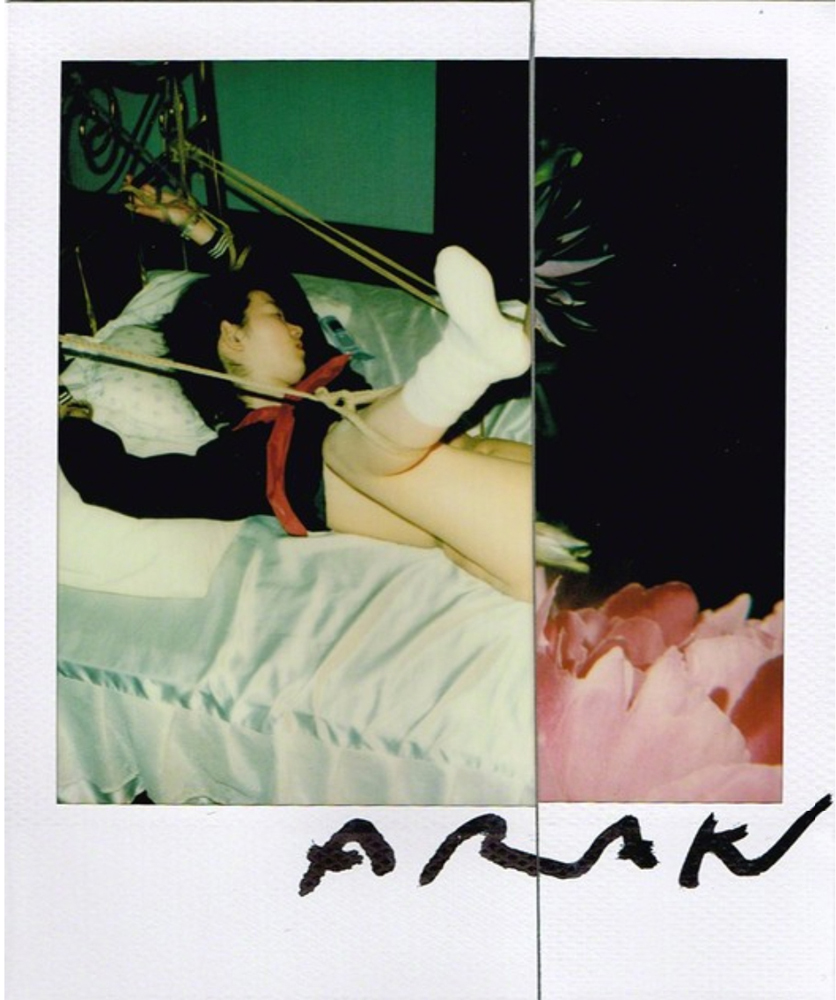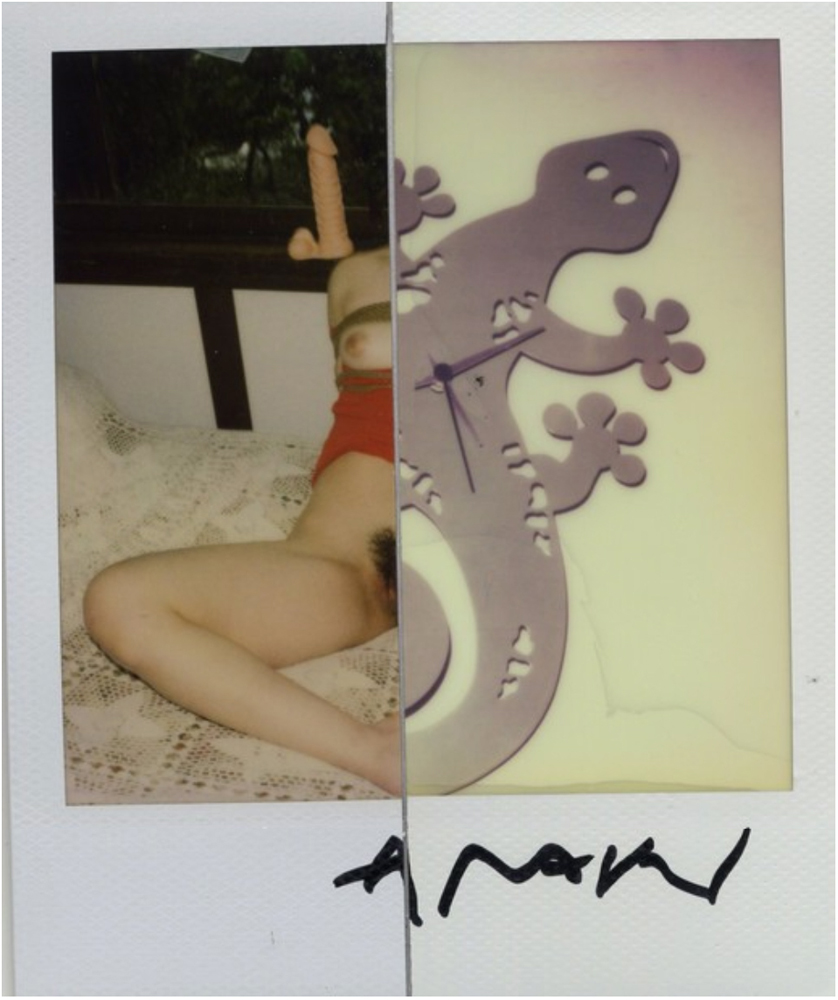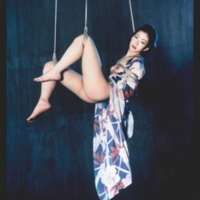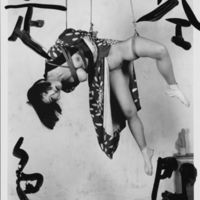Japanese Modernism Across Media
The Beauty of Kinks
Kinbaku - Nobuyoshi Araki from abril on Vimeo.
Despite all the controversies centering on his works, Araki's mastery in producing beautiful images with sophisticated symbolism is however undeniable. From flowers to monsters, Kinbaku to Kimono, nuanced sentiments to plain obscenity, the richness in Araki's photos call for the audiance's careful reading into the artist's world.
-
Diptychs as the Format
In many of Araki's publications, such as Erotos, Flowers in Ruins, Last Year 2001, Tokyo Nude, etc., close-ups of body parts are always juxtaposed with either plants, animals, or landscapes in two contiguous pages as diptychs (pictures hinged on two panels like a book, the two leaves usually serve as alternatives of each other).

 Two picture samples from Flowers in Ruins showing the juxtaposition of female bodies and plants/animal shaped objects
Two picture samples from Flowers in Ruins showing the juxtaposition of female bodies and plants/animal shaped objects-
Artistic Themes & Motifs




![[Untitled] [Untitled]](https://ds-omeka.haverford.edu/japanesemodernism/files/square_thumbnails/886e1ea45df87c15a060f7c6704982fa.jpg)
![[Untitled] [Untitled]](https://ds-omeka.haverford.edu/japanesemodernism/files/square_thumbnails/604ac3649d9857c104e7f1d8a220d9fd.jpg)
![[Untitled] [Untitled]](https://ds-omeka.haverford.edu/japanesemodernism/files/square_thumbnails/bc5c7088b0c478e1a49d4bc814679696.jpg)
![[Untitled] [Untitled]](https://ds-omeka.haverford.edu/japanesemodernism/files/square_thumbnails/b56823f5cd58bc48b3f7a9d7d7f65a7c.jpg)
![[Untitled] [Untitled]](https://ds-omeka.haverford.edu/japanesemodernism/files/square_thumbnails/6ef5bfd5a0ff652cdbe4c61ec5953609.jpg)
![[Untitled] [Untitled]](https://ds-omeka.haverford.edu/japanesemodernism/files/square_thumbnails/e11e73ec5747f3b9e21daefaae99c862.jpg)
![[Untitled] [Untitled]](https://ds-omeka.haverford.edu/japanesemodernism/files/square_thumbnails/8256c63ed5971ec0c6a5daba4287f614.jpg)
![[Untitled] [Untitled]](https://ds-omeka.haverford.edu/japanesemodernism/files/square_thumbnails/6b8bdb5dcbaed64d5b78fdd38259225d.jpg)
![[Untitled] [Untitled]](https://ds-omeka.haverford.edu/japanesemodernism/files/fullsize/1ab142e0274c7fa8d24f02cbca8c05ba.jpg)
![[Untitled] [Untitled]](https://ds-omeka.haverford.edu/japanesemodernism/files/fullsize/72366ac3180bfc8bb7078b552304e87a.jpg)
